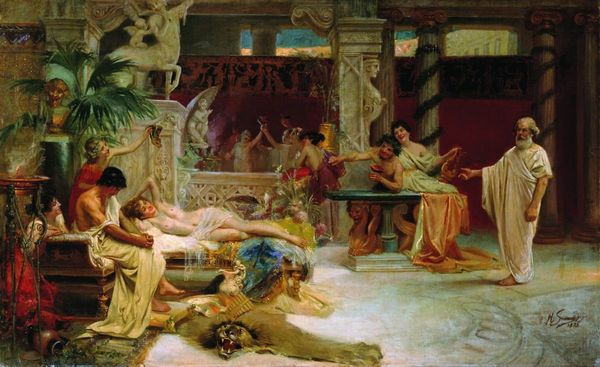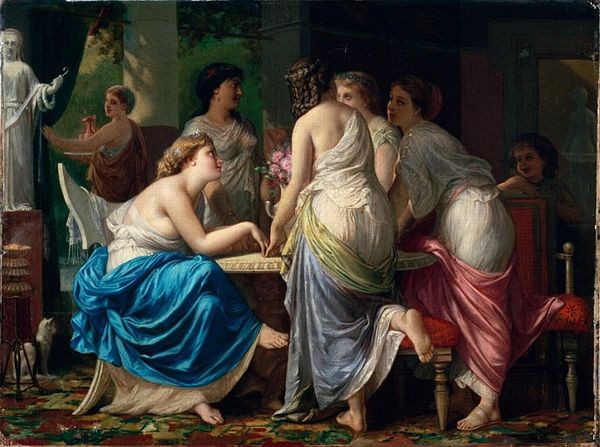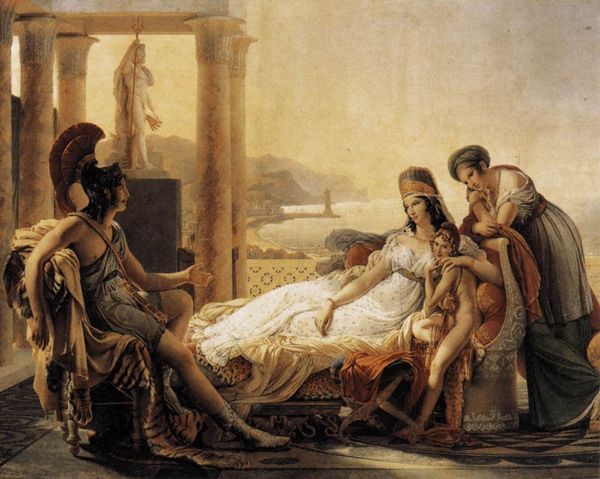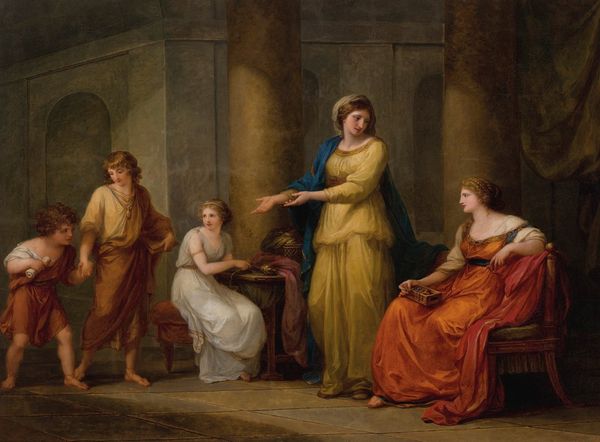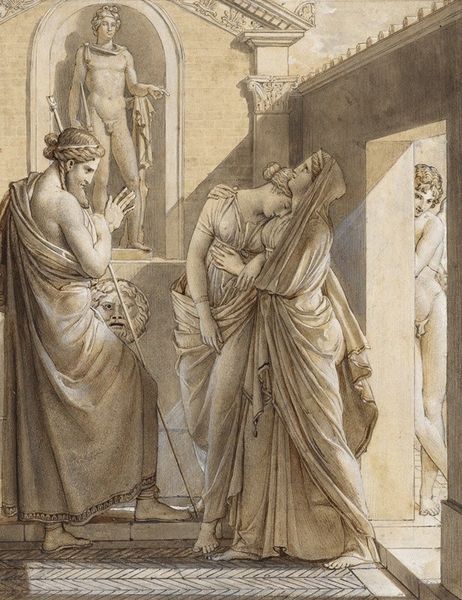
Dimensions: 214 x 97 cm
Copyright: Public domain
Albert Joseph Moore painted ‘The Shulamite’ using oil on canvas. It's currently held at the Walker Art Gallery in Liverpool. The painting's figures are arranged in a classical composition reminiscent of ancient friezes, but this aesthetic choice has a complex relationship with the social context of Victorian England. During the late 19th century, the art world was grappling with questions of morality and the role of art in society. Moore, aligning himself with the Aesthetic movement, championed ‘art for art's sake,’ prioritizing beauty and sensory experience over didactic or moralizing themes. This was a conscious rejection of the Victorian tendency to burden art with social commentary. However, to say that Moore’s work is apolitical would be misleading. The choice to depict idealized female figures in a state of languid leisure—a scene divorced from the industrial realities of the time—represents a deliberate retreat into a world of pure aesthetics. This turn towards aestheticism was read as a commentary on the perceived ugliness of modern life. To fully understand ‘The Shulamite’, we need to look to exhibition records, critical reviews, and the writings of Moore and his contemporaries. By examining these sources, we can better understand the complex relationship between art, society, and the pursuit of beauty in the Victorian era.
Comments
No comments
Be the first to comment and join the conversation on the ultimate creative platform.


